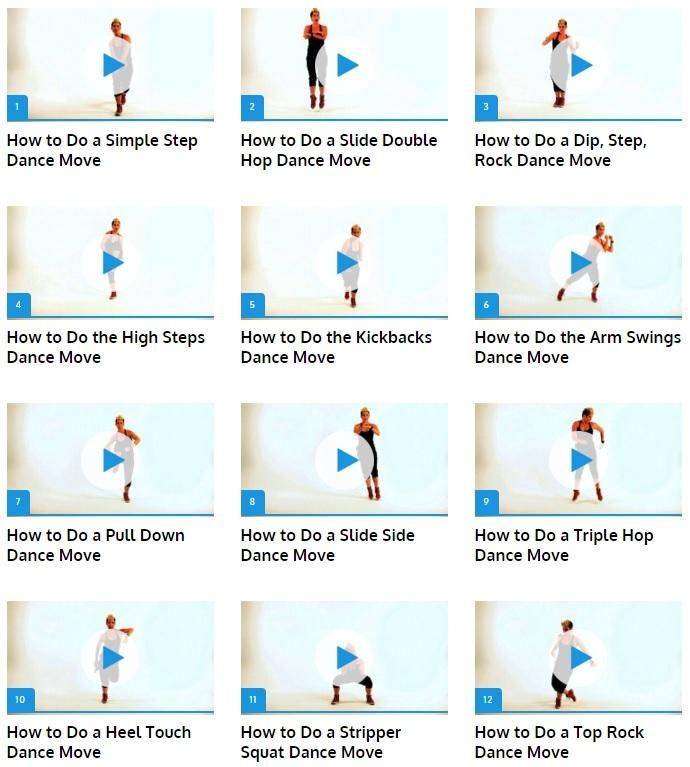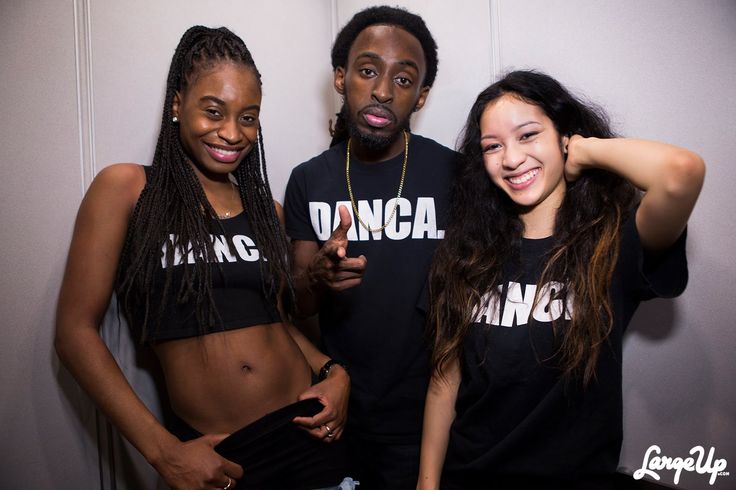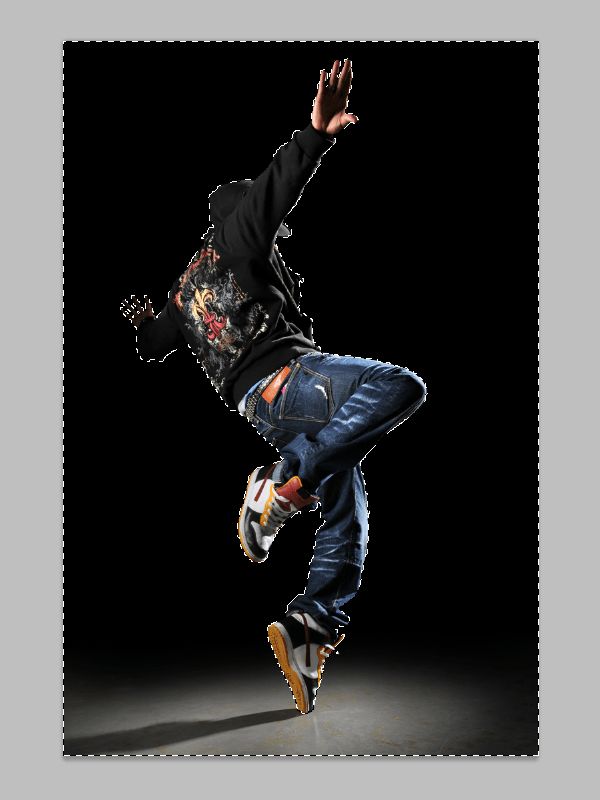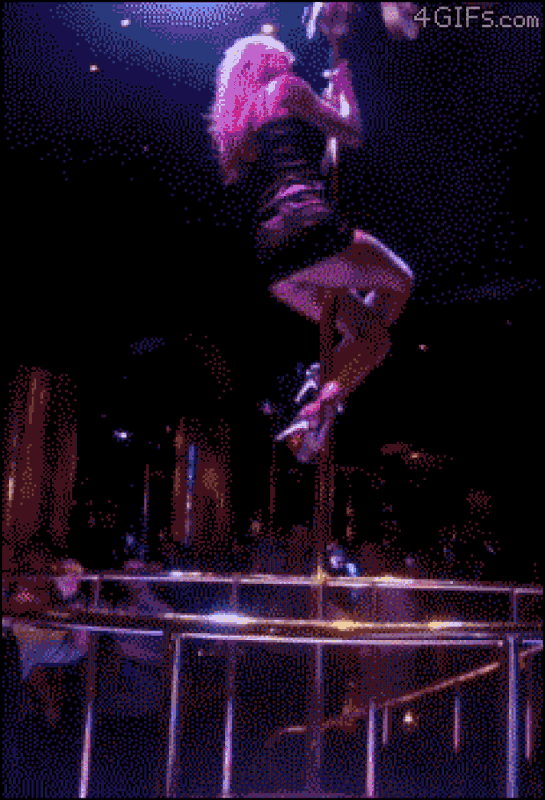How to become a square dance caller
Becoming A Square Dance Caller 3rd Edition (Book) – CALLERLAB KnowledgeBase
Book Table Of Contents Why I Wrote This Book .................... 5
The Plan ..................... 6
The Circle Before The Square ................. 8
Into The Square ....................... 12
Remembering The People In Your Square .............. 13
Modules ......................... 13
Equivalents ................... 14
Flow ....................... 15
Sight Calling Light ............... 18
More Modules ....................... 19
The Loop ....................... 21
Moving Around The Square ................... 24
Your First Sequence ............... 28
Technical & Fractional Zeros ............... 29
Doppelgängers ............... 30
Partner Lines ................... 31
Converting From Boxes To Lines And Back Again ......... 34
Building Your Library .................... 36
Set Sequences . ...................... 39
Standard Applications ................... 41
Module calling versus Sight Calling, Part II ............... 43
How To Resolve ............... 44
Don’t Always Use An Allemande Left ................ 45
FASR ................. 46
sequence Practice ............... 47
Easy Calls Resolve ................... 49
First Objective, Get Everyone Into Lines Facing In ................. 49
Next Objective: Pair Up Your Primary Couple version 1 ............... 50
Final Objective: Resolve ...................... 52
When All The Couples Are Paired Up ............... 53
When The Secondary Couple Is Not Paired Up ............... 55
Easy Calls Resolve Summarized ................ 58
Pairing Up Your Primary Couple version 2 ................ 59
Classic Resolve ............... 61
Grand Resolve ................ 64
Get-Ins ...................... 68
To Corner Box ...............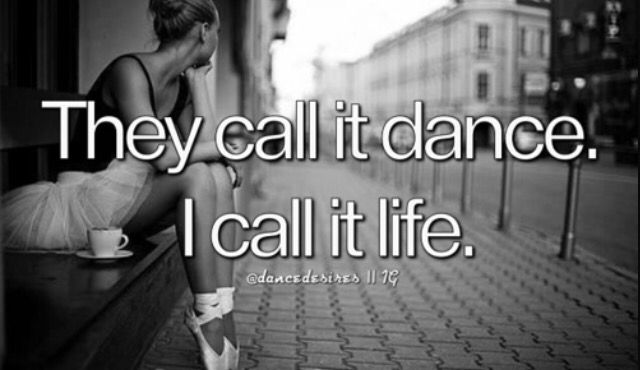 ........ 68
........ 68
To Partner Lines .................. 71
Non-Standard Crossfire Get-Ins ................ 73
Get-Outs ................... 75
Resolves From Partner Lines ..................... 75
Resolves From Ocean Waves ............. 77
Resolving Using Folds ................. 79
Partner Lines to an Allemande Left .................. 81
Resolves From Corner Box ................. 82
You're Home From Corner Box .................. 85
Little Pieces of the Puzzle ............. 87
Advanced Grand Resolve .............. 89
Getting To Partner Lines When The Couples Aren't Paired ......... 91
Box Resolves – Couples Facing Couples ........... 92
The Grand Resolve Summarized ............... 95
Home Resolves ............... 97
Primary Couple Home Resolves ................ 99
Moving to a Quadrant .............. 102
The Tools At Hand ..................... 104
Sweep ¼ to Home Get-Outs . .................... 105
.................... 105
From Partner Lines to Sweep ¼ ............. 111
Cool Endings ................. 112
Flip The Diamond ...................... 112
Using Scoot Back & Box The Gnat ................... 112
Spin Chain Thru ................ 113
Chase Right ................ 113
Follow Your Neighbor .............. 116
Half Tag ....................... 117
In Praise Of Sight Calling, Part LXLVII .............. 118
What Makes For Good Calling? .................. 119
Being A Delightful Host .................... 120
When Teaching, Kindness Is Everything ............... 120
Microphones ...................... 121
Confidence ................. 121
When You Mess Up ................... 122
Music For Patter ................... 123
Modifying The BPM .................. 124
Stringing Songs Together ................ 124
Singing Calls ................. 125
Getting The Verse Sequence To Work .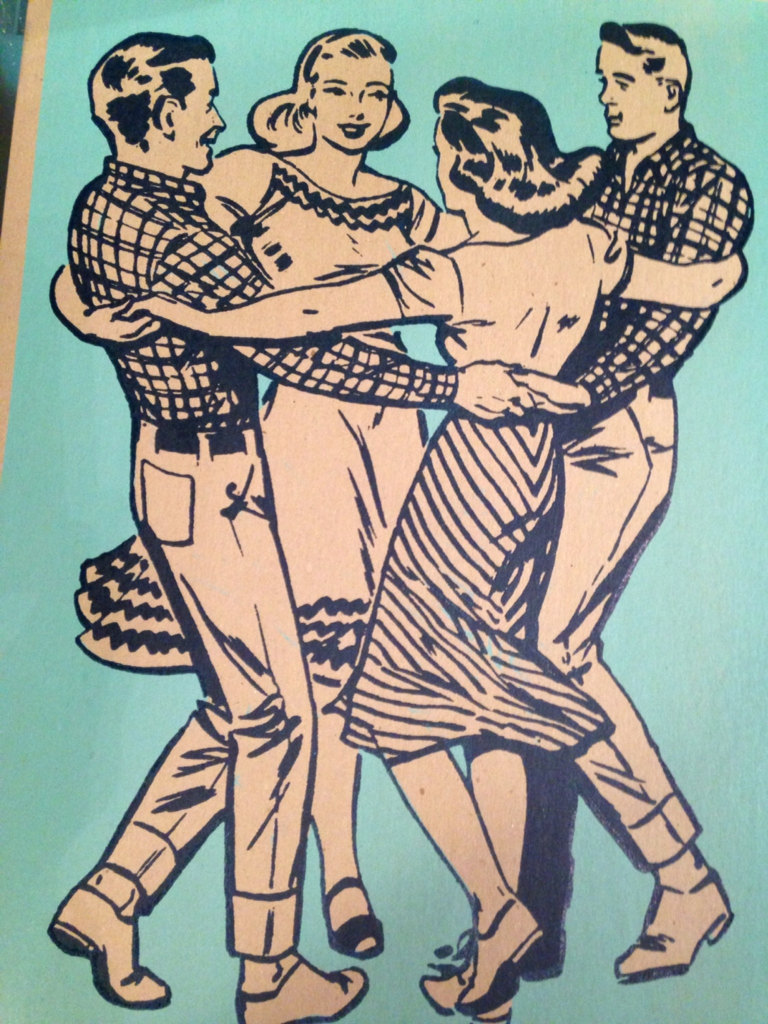 .......... 126
.......... 126
Putting A Singing Call Together ............. 127
Singing ........................ 130
Getting Started In Calling ................... 131
Equipment ..................... 132
Intro Parties ................. 135
The Talk ................ 138
Lessons .................. 140
Why I Use Club50/SSD ...................... 141
The Forgotten Calls .................. 143
Fixing Half-Out Squares ................... 144
Filling Out Squares ................... 145
Rectangles ..................... 145
Getting Up To Call ................ 150
Conventions .................. 151
Games Callers Play .............. 153
Callerlab Definitions .................... 154
Lists ........................ 155
Equivalents ................ 155
Corner Box Get-Ins ................... 156
Alternatives to Allemande Left from a Corner Box ............. 157
Partner Line Get-Ins .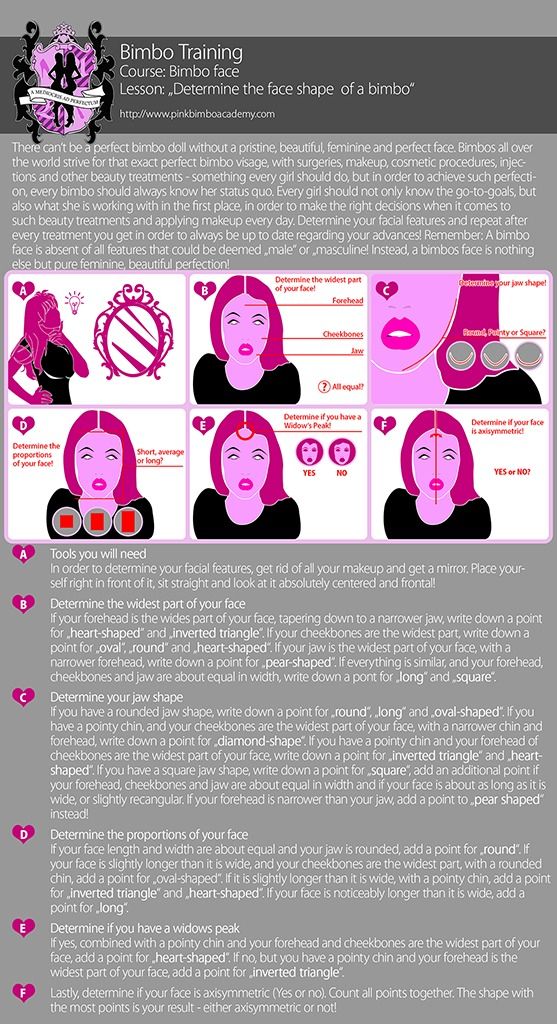 ................ 158
................ 158
Partner Line Get-Outs .............. 159
A-Box Get-Outs .................. 161
D-Box Get-Outs .................. 161
Box To Line Conversions ................. 162
Chicken Pluckers ....................... 163
Get-Outs To Home ..................... 163
Resources ....................... 165
Callerlab ................ 168
FASR ........................ 169
Formations .................... 170
Eight Chain Thru ............... 171
Facing Lines (Lines Facing In) ................. 172
Lines Facing Out ............... 173
Trade By ..................... 174
Double Pass Thru ...................... 175
Completed Double Pass Thru .................. 175
Parallel Two-Faced Lines ................ 176
Parallel Ocean Waves .............. 177
Columns (Right or Left) .................... 178
Z Formations (Left & Right) ....... .............. 178
.............. 178
Fractional Tags ................. 179
Point To Point Diamonds ................. 180
Facing Point To Point Diamonds ............ 180
Tidal Wave ................. 181
Tidal Two-Faced Line .............. 181
Arrangement ................ 182
Half Sashayed Solutions ................... 182
Waves ................. 183
How Circulates Change Arrangement ........... 185
Diamonds ................... 185
Sequence ........................ 186
Alternative Resolve Methods .............. 187
Mental Image ..................... 187
CRaMS ......................... 187
Call List .................. 188
Ed Gilmore - Square Dance Callers Instruction Course
Creator: Ed Gilmore (1949)
[Buddy Weaver has digitized an hour-long audio recording of Gilmore leading a callers' class. It can be found here.]
This is the text of the syllabus of Ed Gilmore's class. It contains plenty of philosophy, discussion of the caller's role, a detailed series of suggestions about how to teach basic figures (complete with specific language that he uses), plenty of detailed dance instructions, and sample patter.
It contains plenty of philosophy, discussion of the caller's role, a detailed series of suggestions about how to teach basic figures (complete with specific language that he uses), plenty of detailed dance instructions, and sample patter.
Some excerpts:
• The United States has not discovered its folk dance or possibly it's just beginning to. There has been a void in our lives for the past 40 years. We have been a nation of spectators. Every sport or recreational activity has been on a basis of competition or exhibition with the development of star athletes or entertainers and the elimination of the mediocre or average participants. No other form of recreation presents an opportunity for participation to so large a number of our people as square dancing. There is no spirit of competition or exhibitionism in square dancing. Eight people get together and each one is striving for perfect cooperation with the other seven to complete a pattern in time with the instinctive rhythm of the music. No one is out to win anything or out do the other fellow.
No one is out to win anything or out do the other fellow.
• Most difficult to avoid is the selfish clique. The cliques will be your big problem all through your program but if you start your program with an exclusive group you will have two strikes against you before you start. For this reason we recommend the development of square dance groups open to enrollment to all who wish to attend. We further recommend that you try to adjust the floor space to the membership rather than limit the membership to one certain facility. Facilities continue to be the major limitation of the program as a whole but the pressure of thousands of square dancers will eventually force the development of adequate facilities.
• If you are successful in imparting a feeling of good fellowship to your group the battle is half won. Your own attitude will be reflected in their reactions. If you are friendly, patient, and jolly they will be cooperative. If you are irritable and impatient they will head for the cloakroom. You must either be "in the pink" physically and mentally or a darned good actor before you set out for an evening of calling.
You must either be "in the pink" physically and mentally or a darned good actor before you set out for an evening of calling.
• You must use good judgement in the selection of dances for your program. Avoid the use of complicated dances for your beginners. If you push your groups too fast you will make it impossible for them to relax and really enjoy themselves. With your advanced groups use a well balanced program of advanced and beginner dances. Make a practice of following a complicated dance with an easy one and try to include one new dance on each program.
• You will find that the use of too much patter or variety of breaks with beginner groups will confused them and detract from their pleasure. Use breaks and patter with judgement and always control your desire to "show off." With advanced groups use as much variety as possible. Always adjust your program to the ability of your dancers calling to the majority. Avoid holding the program back for a few slow dancers or raising the level for the benefit of a few expert dancers.
Collection: MWSD
Subjects: General - Dance and Culture, Transitional/Western 1940s
Tags: caller, Ed Gilmore, instruction, MWSD, philosophy
Item Relations
| Item: Ed Gilmore interview, 1961 | is related to | This Item |
| Item: Four in Line You Travel - Rickey Holden | is related to | This Item |
| Item: Ed Gilmore - Caller's Institute | is related to | This Item |
| Item: Class Notes - Jim Mayo, 1963 | is related to | This Item |
| Item: Learn Square Dancing - Ed Gilmore | is related to | This Item |
| Item: Starline | is related to | This Item |
| Item: Beginners Square Dance - plan for ten lessons (Don Armstrong) | is related to | This Item |
| Item: Syllabus of Square Dances, Rickey Holden 1949 | is related to | This Item |
| Item: Rural Leaders' Guide for Square and Group Dances, 1951 | is related to | This Item |
| Item: Dixie Folk syllabus - 1951 | is related to | This Item |
| Item: Square Dance Workbooks 1, 2, and 3 - Don Armstrong | is related to | This Item |
| Item: Calling for Modern Square Dancing - Jim Mayo | is related to | This Item |
| Item: Ed Gilmore - Q&A, 1962 - part 1 | is related to | This Item |
Citation
Ed Gilmore, “Ed Gilmore - Square Dance Callers Instruction Course - 1949,” Square Dance History Project, accessed December 10, 2022, https://squaredancehistory. org/items/show/581.
org/items/show/581.
Dublin Core
Title
Ed Gilmore - Square Dance Callers Instruction Course - 1949
Alternative Title
sponsored by the Redlands, California, Recreation Department
Subject
General - Dance and Culture
Transitional/Western 1940s
Description
[Buddy Weaver has digitized an hour-long audio recording of Gilmore leading a callers' class. It can be found here.]
This is the text of the syllabus of Ed Gilmore's class. It contains plenty of philosophy, discussion of the caller's role, a detailed series of suggestions about how to teach basic figures (complete with specific language that he uses), plenty of detailed dance instructions, and sample patter.
Some excerpts:
• The United States has not discovered its folk dance or possibly it's just beginning to. There has been a void in our lives for the past 40 years. We have been a nation of spectators. Every sport or recreational activity has been on a basis of competition or exhibition with the development of star athletes or entertainers and the elimination of the mediocre or average participants. No other form of recreation presents an opportunity for participation to so large a number of our people as square dancing. There is no spirit of competition or exhibitionism in square dancing. Eight people get together and each one is striving for perfect cooperation with the other seven to complete a pattern in time with the instinctive rhythm of the music. No one is out to win anything or out do the other fellow.
Every sport or recreational activity has been on a basis of competition or exhibition with the development of star athletes or entertainers and the elimination of the mediocre or average participants. No other form of recreation presents an opportunity for participation to so large a number of our people as square dancing. There is no spirit of competition or exhibitionism in square dancing. Eight people get together and each one is striving for perfect cooperation with the other seven to complete a pattern in time with the instinctive rhythm of the music. No one is out to win anything or out do the other fellow.
• Most difficult to avoid is the selfish clique. The cliques will be your big problem all through your program but if you start your program with an exclusive group you will have two strikes against you before you start. For this reason we recommend the development of square dance groups open to enrollment to all who wish to attend. We further recommend that you try to adjust the floor space to the membership rather than limit the membership to one certain facility.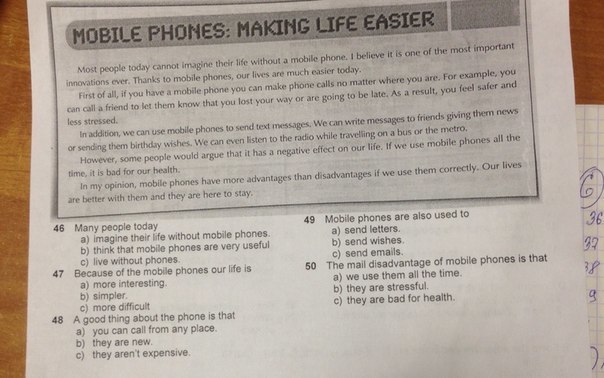 Facilities continue to be the major limitation of the program as a whole but the pressure of thousands of square dancers will eventually force the development of adequate facilities.
Facilities continue to be the major limitation of the program as a whole but the pressure of thousands of square dancers will eventually force the development of adequate facilities.
• If you are successful in imparting a feeling of good fellowship to your group the battle is half won. Your own attitude will be reflected in their reactions. If you are friendly, patient, and jolly they will be cooperative. If you are irritable and impatient they will head for the cloakroom. You must either be "in the pink" physically and mentally or a darned good actor before you set out for an evening of calling.
• You must use good judgement in the selection of dances for your program. Avoid the use of complicated dances for your beginners. If you push your groups too fast you will make it impossible for them to relax and really enjoy themselves. With your advanced groups use a well balanced program of advanced and beginner dances. Make a practice of following a complicated dance with an easy one and try to include one new dance on each program.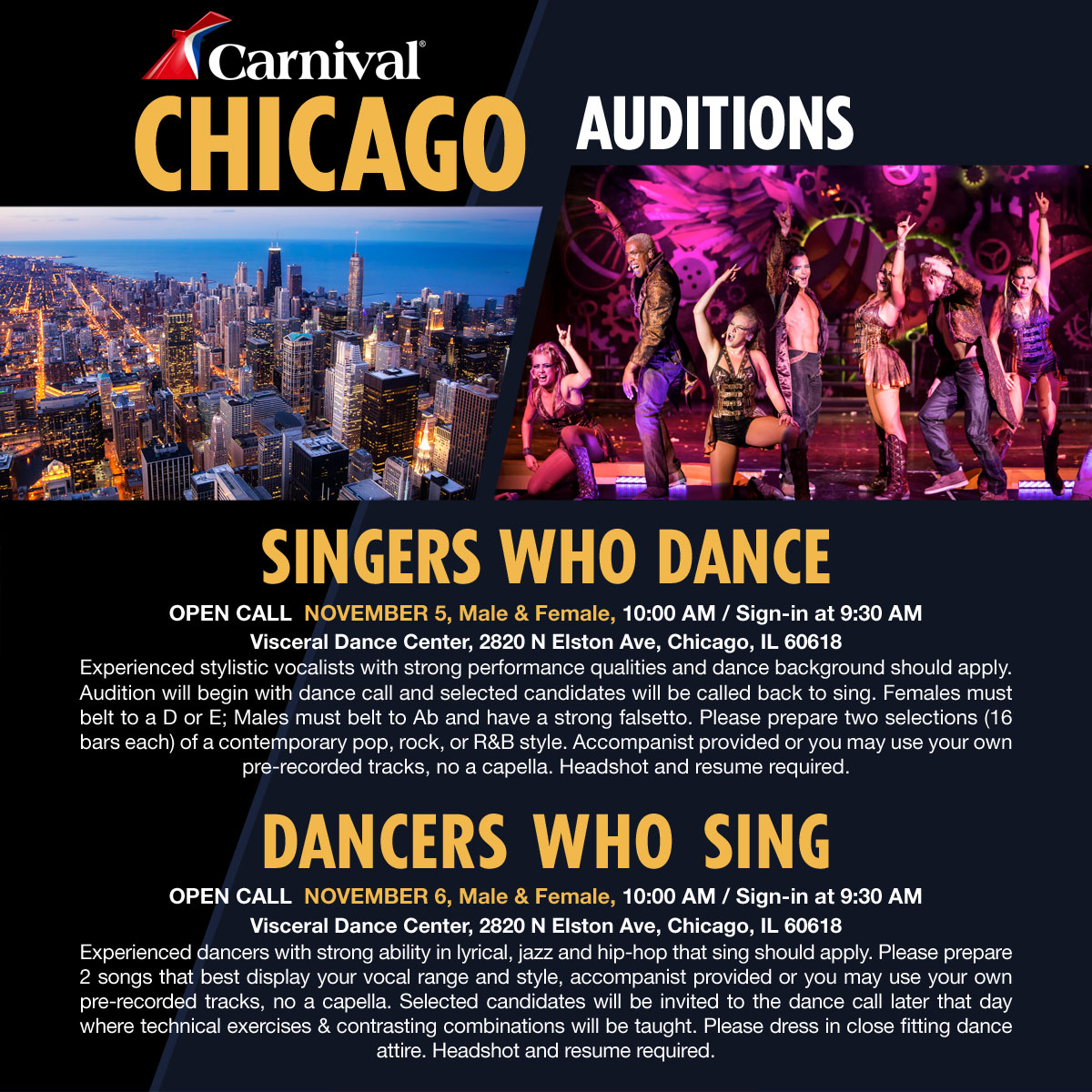
• You will find that the use of too much patter or variety of breaks with beginner groups will confused them and detract from their pleasure. Use breaks and patter with judgement and always control your desire to "show off." With advanced groups use as much variety as possible. Always adjust your program to the ability of your dancers calling to the majority. Avoid holding the program back for a few slow dancers or raising the level for the benefit of a few expert dancers.
Creator
Ed Gilmore
Date Created
1949
Spatial Coverage
USA, California, Redlands
Temporal Coverage
1940s
Collection
What are the varieties of dance movements? | Dance school Cosmo Dance
What are the types of dance movements?
Undoubtedly, dance is a special kind of art, because with the help of various movements a person expresses his inner world, feelings, emotions and various images, mainly doing it to music.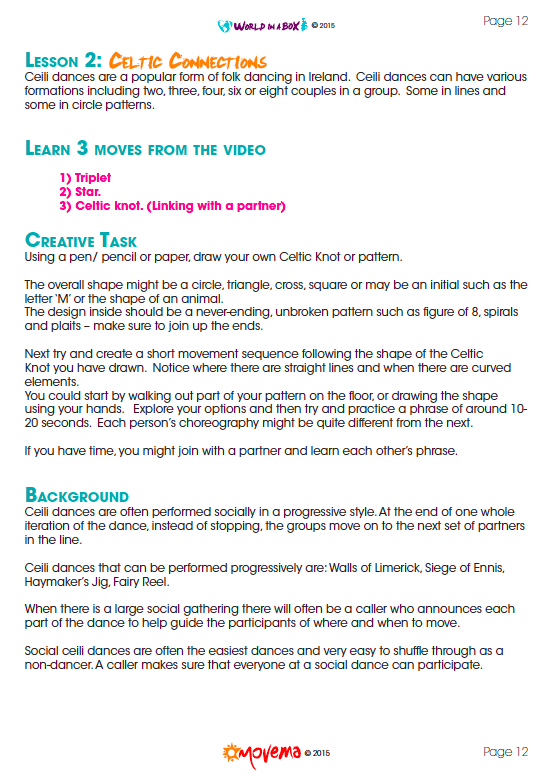 In any dance movement there is some specific idea. This is a certain manner of conveying something important to other people, revealing oneself.
In any dance movement there is some specific idea. This is a certain manner of conveying something important to other people, revealing oneself.
The dance has been born and perfected over many centuries, so it is unreasonable to assume that it is inclined towards mere entertainment or useless pastime. Moreover, the emergence of dance refers to very ancient religious customs of our ancestors. Although at the present time around the world there are already quite a lot of different movements in dance.
Among these movements, one can single out classical or its subspecies - modern ballets, folk dances, Latin American and many others, which are constantly updated and bring more and more new fashion to this day.
Folk movement
is the self-expression of various nationalities that tell in dances about the views, customs, temperament, customs and traditions of their population. For example, this is a gypsy girl - a hot and free dance; hopak - sparkling Ukrainian dance; lezginka - a spectacular Caucasian dance; round dance, trepak and others.
Historical dances
are the dances of the old times. They came to us from the 19th century, for example, these are dances - mazurka, square dance, also from the Renaissance, for example, this is contradans, and from the Baroque, for example, the minuet. Such dances have not lost their popularity to this day.
Hustle
is a dance that is essentially an improvisation, so it is easy to learn and absolutely anyone can perform it. The movements of this dance are performed in the disco style to the music. Hustle has the following varieties: freestyle - free and independent dance; ladies hustle - a dance where 2 partner girls dance; sports hustle and others.
Swing
- dances suggesting a jazz rhythm. This direction originated in the 20th century and was created according to African and American dance traditions. Swing includes such types as, for example, boogie-woogie - a super-energetic and dynamic dance that simply “explodes” the viewers and the performers of this dance with drive. This also includes rock and roll - probably the most liberated and free dance of the 50s. Another well-known jive dance is a very frisky dance with free movements.
This also includes rock and roll - probably the most liberated and free dance of the 50s. Another well-known jive dance is a very frisky dance with free movements.
Street dancing
- this is a kind of direction that was most often developed by young men on the streets, in various parks and large venues. There are many varieties of it. For example, this is popping - a dance in which the dancer performs distinct movements, while it seems that his body is vibrating. This also includes breakdance - a dance that combines many elements of a power nature, this is aerobics, some tricks on the arms or legs, plastic. Therefore, such a dance is considered to some extent a sport.
- Hip-hop - seemingly very simple, but in fact with special difficulties dance. When this dance was revived, its idea was to protest against injustice and corruption. Well, in the future, this dance began to have different views and rapidly spread throughout the world. In order to dance it professionally, you need to train for quite a long time. When performing movements in a dance, a large load is transferred to the muscles, so dancers, before learning to dance, must be well prepared physically, develop plasticity and flexibility in themselves.
When performing movements in a dance, a large load is transferred to the muscles, so dancers, before learning to dance, must be well prepared physically, develop plasticity and flexibility in themselves.
Erotic dances
- this direction includes dances that emphasize the femininity and beauty of a girl. These are dances such as striptease - a dance during which you must use a pole. It involves a dance in which the dancer, while performing various movements, gradually exposes her body. This also includes belly dancing - a rather plastic and enchanting dance.
Ballroom dancing
is a fairly popular dance in which exactly two partners participate: a woman and a man. Such a dance is divided into 2 main programs: the first is a standard, this includes dances: tango is an unsolved, mysterious dance that shows the nature of the relationship between partners; waltz - a dreamy and enthusiastic dance performed by a couple in a closed position; quickstep - radiant and perky performance of mobile movements. The second program is latin, here dances: rumba is a dance of feelings; cha-cha-cha - an active dance about carelessness; samba is a dance about beauty and vivid impressions and others.
The second program is latin, here dances: rumba is a dance of feelings; cha-cha-cha - an active dance about carelessness; samba is a dance about beauty and vivid impressions and others.
Club dances
are dances that in principle have a large scope in the choice of movements. Such dances are intended for performance on large venues, on the dance floor. For example, such a flow in dances as electrodance is performed to special music at high speed, while the movements are performed with lightning speed and skillfully. This current also includes the tectonics, a fairly free and intricate dance. Among the main movements of a tectonist, one can single out the following: a jump in various forms, instant swings with arms and even legs.
Dances for children
are dances that previously belonged only to adult dances. Now the younger generation is doing it too. Children need this even more, because the dance is able to restore and improve physical development, prevent the appearance of stoop, and also make a beautiful figure and posture. In addition, it is much easier for children to learn to dance than adults, because they are still very flexible and energetic.
In addition, it is much easier for children to learn to dance than adults, because they are still very flexible and energetic.
Modern dances for girls
- a trend in dancing that is close to young girls and slightly older women. This, for example, is a pole dance - a dance composed of some acrobatic and gymnastic elements. To dance it safely and perfectly, you need to prepare your body well, do physical exercises.
Strip-plasticity belongs to the same trend - a type of dance that allows you to become liberated and irresistible for your beloved man. Such a dance helps to say goodbye to your complexes and become more decisive.
Another dance in this current is the go-go. This type of dance, which is more related to the flow of club dances. Here the movements are performed more rigidly and aggressively. Dancers must have an ideal figure in order to master the skills of this dance and perform in the future at discos or clubs, not only as amateurs, but also as professionals.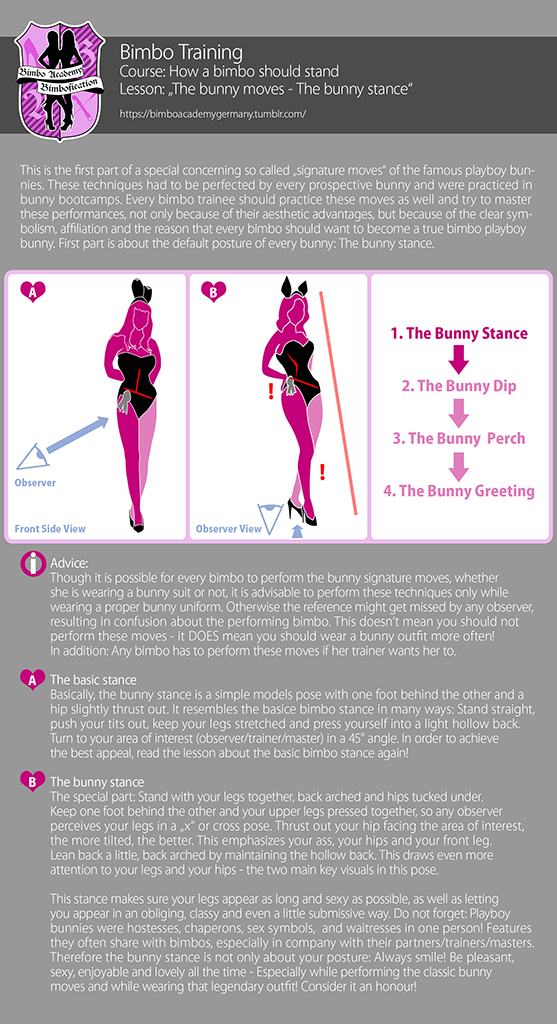 Thanks to these dances, the body becomes beautiful, slender, plastic, and you can also get rid of stoop.
Thanks to these dances, the body becomes beautiful, slender, plastic, and you can also get rid of stoop.
Latin dance
- both imperious and exciting, including the following dances:
- Capoeira - in this dance you can meet acrobatic elements, leg swings, and other movements of a fighting nature.
Flamenco is an interesting dance that sometimes uses castanets. And its "highlight" is that it is danced to the tune of a guitar.
- Bachata is the most popular and sophisticated dance among others in this current, it is also considered a pair dance.
Modern styles
are the most current modern dances and are most common among young people. These include: shuffle, jazz, postmodern, go-go, modern, tectonic, hip-hop, breakdance and many others.
Ballet
is the so-called performance, where the content of this performance is embodied in reality with the help of various musical and choreographic images. Dancers, thanks to special facial expressions and gestures, express the depth of character, emotions and feelings of their character. In other words, this is theater. Ballet can be classical, which is based on a certain plot, a certain idea. Modern ballet is a subspecies of the classical ballet, but with new techniques and a different story. This includes species such as:
Dancers, thanks to special facial expressions and gestures, express the depth of character, emotions and feelings of their character. In other words, this is theater. Ballet can be classical, which is based on a certain plot, a certain idea. Modern ballet is a subspecies of the classical ballet, but with new techniques and a different story. This includes species such as:
- Modern: it is ideal for dancers with good physical fitness and excellent stretching;
- Contemporary: this dance is danced exactly barefoot or solo, or in pairs, or even in a group. The main idea of this dance is self-expression. It does not require any hard efforts, so everyone can start dancing this dance, regardless of age, only desire is important.
There is also a romantic ballet - a dance that was created in the image of heroes from literary works.
Currently, there are a huge number of different styles of dance, so a person of absolutely any age can find their own dance style. In addition, various innovations in dancing are constantly coming into fashion. Since each generation strives for self-improvement, for the expression of their opinions, feelings and ideas. Each person is unique and everyone wants to bring something new into this life!
In addition, various innovations in dancing are constantly coming into fashion. Since each generation strives for self-improvement, for the expression of their opinions, feelings and ideas. Each person is unique and everyone wants to bring something new into this life!
Work with your feet: 8 exciting facts about the cancan and the Moulin Rouge
For millions of years, our civilization has been moving towards the invention of the cancan - a dance that proudly bears the stamp of one of the most frank, provocative and crazy. Today, October 21, he has something like a formal birthday. As a gift, we decided to present some completely informal facts about him.
Artist: Jean-Gabriel Domergue
1. Debut
The can-can was first publicly performed on 21 October 1858 during the premiere of Orpheus in the Underworld by the French composer Jacques Offenbach. The event was held at the Bouffe-Parisien theater in Paris. At that time, there was no scandalousness familiar to us in the dance: to the rollicking music, Orpheus and the nymphs danced a quadrille in hell.
At that time, there was no scandalousness familiar to us in the dance: to the rollicking music, Orpheus and the nymphs danced a quadrille in hell.
Quadrille - because, according to legend, it was this dance that was the ancestor of the can-can. The history of the origin of this dance is dark and mysterious. From numerous sources it was possible to take out the following. The most common version: it originated at the beginning of the 19th century from the final figure of a quadrille, and became an independent and very popular dance (by the way, at a gallop pace) in the 1820-1830s at parties in the working-class districts of Paris. Then the can-can was something like rock-n-roll or a twist in Soviet discos: young men and girls, breaking into pairs, danced hitherto unseen miracles using acrobatic elements. Whether Komsomol raids were organized on them is unknown.
On a professional basis, the can-can was performed primarily by solo dancers at the very beginning. The corps de ballet, that is, the dance in a row, is a slightly later English invention. Like the name "cancan" itself (French cancan - "noise, din, hubbub"), it was given by the British impresario Charles Morton. Incidentally, he introduced the first "French Cancan" to England in 1861 at his new music hall in Oxford Street, London.
Like the name "cancan" itself (French cancan - "noise, din, hubbub"), it was given by the British impresario Charles Morton. Incidentally, he introduced the first "French Cancan" to England in 1861 at his new music hall in Oxford Street, London.
At the dawn of the can-can, even men did not shy away from it. In the 1870s, the men's creative group "Quadrille des Clodoches" ("Quadrille des Clodoches") performed in London. But the ladies quickly overshadowed and almost ousted the stronger sex from the profession. Although even now gentlemen dance the cancan and are in demand in this - at the Moulin Rouge, for example.
When entrepreneurs Joseph Oller and Charles Siedler founded the legendary Moulin Rouge in Paris in 1889, the cancan became an integral part of the cultural program and a hallmark of the establishment. And he danced already, as expected, with dragging and skirting.
2. Music
The canonical cancan melody “ta-ta, ta-ta-ta-ta-ta-ta…” is the “Infernal Gallop” (Galop infernal) from the above-mentioned operetta “Orpheus in Hell” by Jacques Offenbach.
3. Lingerie
Foam of lace and openwork stockings, ribbons and bows, and even special knickers that diverged, so to speak, on the facade from cocky "et" legs - this is all from the evil one. The traditional cancan was supposed to be danced without burdening oneself with underwear. However, this was strictly forbidden. The leadership of the Moulin Rouge made innocent eyes at the claims of the incriminating authorities: they say, pardon, but who do you take us for, this is a solid institution!
A very funny moment connected with this ancient custom adorns the British-Canadian film Easy Virtue (2008). Worth watching if only for the can-can performed by Jessica Biel, although the film is already very, very nice.
4. Twine
For the appearance of the splits in the cancan, say thanks to one of the legendary dancers, the pillar of the genre, the super-megastar of the Moulin Rouge, Louise Weber. The newspapers called her "the queen of Parisian sensuality", but her main nickname was La Goulue, that is, "Insatiable" or "Glutton". If she received the “royal” title for her unbridled temperament and dedication on stage, then a mocking nickname - for her manner, sitting down at tables with rich visitors at their invitation, eating everything to the last crumb and drinking to the last drop.
There could have been three or four such tables in an evening, and she dealt with all of them cleanly. A poor, hungry childhood had an effect. "La Goulue" came from a family of laundresses. Habits did not change either when she became the most expensive dancer in Paris (at the Moulin Rouge she was paid more than 3,000 francs a week), or after eating and drinking in such quantities began to affect the figure. On the figure, but not in performances: in all weight categories, Louise demonstrated the cancan of the highest standard, intensity, grace and, what is already there, obsceneness.
On the figure, but not in performances: in all weight categories, Louise demonstrated the cancan of the highest standard, intensity, grace and, what is already there, obsceneness.
Pablo Picasso, Oscar Wilde, Prince of Wales, King Edward VII came to look at her. She was captured by Pierre Auguste Renoir, and Henri Toulouse-Lautrec had her favorite model and now flaunts in his paintings, posters and posters for the Moulin Rouge.
Henri Toulouse-Lautrec. La Goulue at the entrance to the Moulin Rouge (1892)
Henri Toulouse-Lautrec. Poster “Moulin Rouge. La Goulue (1891)
Henri Toulouse-Lautrec. La Goulue dancing with Valentin Beskostny (1895)
But let's get back to the innovation that La Goulue brought to the can-can. She came up with a spectacular final point in the dance. It was done like this: the cancan woman rotated on one leg, and raised the other one higher and higher until it was above her head. Then, after a short pause, Mamselle Weber uttered a piercing cry, if not a squeal, and did not sit down, but fell on the twine. The public went wild!
She came up with a spectacular final point in the dance. It was done like this: the cancan woman rotated on one leg, and raised the other one higher and higher until it was above her head. Then, after a short pause, Mamselle Weber uttered a piercing cry, if not a squeal, and did not sit down, but fell on the twine. The public went wild!
And one more notion, La Goulue's contribution to the development of the cancan: spinning on one foot, with the toe of the other, she easily and cutely knocked off the hats of visitors. It has even become fashionable for dancers to do such things on a bet with wealthy gentlemen. And although everyone knew how the matter would end and who would win the argument, the men willingly indulged the pretty dancers.
5. Turgenev, Tolstoy and the Cancan
The can-can was known not only in the decaying Parisian cafes, but also in the progressive Mother Russia. Great minds have not passed by this outstanding cultural phenomenon! Such a story is contained in the book "Essays of the Past" by the eldest son of Leo Nikolayevich Tolstoy - Sergei Tolstoy.
It was in the 1860s, with Ivan Turgenev, Leo Tolstoy and a can-can.
On one of his trips to Russia, Turgenev stayed with Tolstoy in Yasnaya Polyana. Once they arranged a musical evening, everyone played music, sang, and there, somehow, the quadrille went by itself. Turgenev was paired with Sofia Andreevna. Then he was asked: do they still remember the good old quadrille in France, or is there only one cancan now? Ivan Sergeevich replied: “The good old cancan is no worse than a quadrille. This is not at all what they dance in cafes now! The old cancan is decent and graceful!” He left Sofya Andreevna, put his fingers behind the armholes of the vest and let's show, now crouching, then throwing his legs forward. Tolstoy looked at him sullenly. And in the evening he wrote in his diary: “Turgenev cancan. Sad".
6. Cancan and Khrushchev
Not only great Russian writers and ordinary English monarchs have a history of acquaintance with the cancan. The cancan was also shown to Soviet citizens, not to everyone, of course, but only to the most worthy. On September 15-27, 1959, the first visit of a Soviet leader to the United States in the 42-year history of Soviet-American relations took place, Nikita Sergeyevich Khrushchev went on behalf of the USSR.
The cancan was also shown to Soviet citizens, not to everyone, of course, but only to the most worthy. On September 15-27, 1959, the first visit of a Soviet leader to the United States in the 42-year history of Soviet-American relations took place, Nikita Sergeyevich Khrushchev went on behalf of the USSR.
As part of the trip, Comrade Khrushchev was taken to Hollywood to shoot the film "Can-Can" with Shirley MacLaine, Frank Sinatra and Maurice Chevalier. For the demonstration, they chose the most piquant moment of the movie. “Nikita Sergeevich patted them at first, but then he scolded both MacLaine and all of Hollywood for immorality and said that our people would never watch Hollywood production,” said Sergey Alekseev, host of Culture News on the Kultura TV channel.
And here is how it is said about this episode in the book “Face to Face with America”, published in the USSR under the editorship of journalist Alexei Adzhubei, Khrushchev's son-in-law. By the way, appreciate the style, very fashionable in those days.
After a small skit, in which the American Frank Sinatra and the Frenchmen Maurice Chevalier and Louis Jourdain took part, the audience was shown a can-can. But before talking about him, I would like to say that the very girl who danced the main part in this cancan, the famous American actress Shirley MacLaine, turned to Nikita Sergeevich with surprisingly warm words in Russian: she welcomed him here, in Hollywood, wished him success during the trip and said that the American film actors were happy to see and hear the head of the Soviet government.
And the same girl and her friends had to perform a base dance for the guests. The girls grimaced, fell to the floor, kicked their legs. And to everyone who saw this dance, it was clear that the actresses were ashamed both in front of themselves and in front of those who see them. They danced, not understanding who and why had the idea to force them to do this in front of Nikita Sergeevich Khrushchev and other Soviet guests.
And Nikita Sergeevich calmly sat in the box for honorary spectators and, when the girls finished the dance, applauded them.
As soon as Nikita Sergeevich said goodbye to the actors, a flock of American journalists rushed to him. It was then that the main question was asked, for the sake of which the owners of the studio, obviously, showed the can-can. Very calmly, directly and witty, Nikita Sergeevich said a few phrases that later went around many newspapers around the world:
- Are you asking me about the cancan? From my point of view, from the point of view of the Soviet people, this is immoral. Good actors are forced to do bad things for the amusement of jaded, depraved people. Here in the Soviet Union we are accustomed to admiring the faces of the actors, and not their behinds.
7.
 Cancan in the Gulag
Cancan in the Gulag This is a fragment from Yelena Markova's unpublished book "A Camp Notebook and a Group Portrait of the 58th Article", posted on the website of the Gulag History Museum. He recalls Alexei Markov, who worked at the Vorkuta Theater from 1944 to 1959, where he combined artistic activities with the position of head of the electric lighting department.
In 1944, I ended up in Vorkuta with a ten-year term in labor camps and five years in the horns and legs (that is, in addition to 10 years in prison, A.A. Markov was sentenced to a five-year loss of civil rights ). I was immediately assigned to underground work in mine number 8. Every day there were accidents: someone died, someone became crippled. Well, I think I'll be lost ...
But then a rumor spread that a commission for the selection of artists for the city theater was working in our zone. I decided to go for an audition.
I passed the exams with ease: I have a baritone voice, I read sheet music and so on (as a child, Markov sang in the choir, played the violin, and was engaged in amateur performances).


